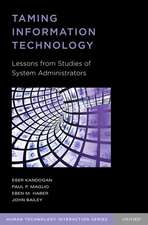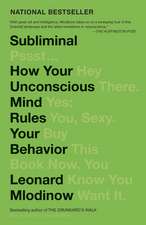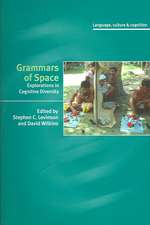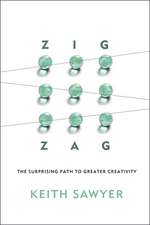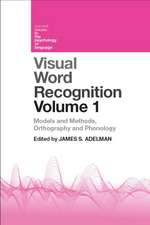Situated Cognition: On Human Knowledge and Computer Representations: Learning in Doing: Social, Cognitive and Computational Perspectives
Autor William J. Clanceyen Limba Engleză Paperback – 27 aug 1997
| Toate formatele și edițiile | Preț | Express |
|---|---|---|
| Paperback (1) | 431.40 lei 6-8 săpt. | |
| Cambridge University Press – 27 aug 1997 | 431.40 lei 6-8 săpt. | |
| Hardback (1) | 852.53 lei 6-8 săpt. | |
| Cambridge University Press – 27 aug 1997 | 852.53 lei 6-8 săpt. |
Din seria Learning in Doing: Social, Cognitive and Computational Perspectives
-
 Preț: 311.66 lei
Preț: 311.66 lei - 9%
 Preț: 695.96 lei
Preț: 695.96 lei -
 Preț: 319.43 lei
Preț: 319.43 lei -
 Preț: 228.66 lei
Preț: 228.66 lei -
 Preț: 201.39 lei
Preț: 201.39 lei - 11%
 Preț: 493.04 lei
Preț: 493.04 lei -
 Preț: 281.88 lei
Preț: 281.88 lei - 14%
 Preț: 900.82 lei
Preț: 900.82 lei -
 Preț: 326.53 lei
Preț: 326.53 lei -
 Preț: 346.50 lei
Preț: 346.50 lei -
 Preț: 296.65 lei
Preț: 296.65 lei -
 Preț: 292.45 lei
Preț: 292.45 lei - 20%
 Preț: 279.91 lei
Preț: 279.91 lei - 11%
 Preț: 459.10 lei
Preț: 459.10 lei -
 Preț: 357.13 lei
Preț: 357.13 lei - 11%
 Preț: 526.58 lei
Preț: 526.58 lei - 14%
 Preț: 784.65 lei
Preț: 784.65 lei -
 Preț: 320.66 lei
Preț: 320.66 lei - 11%
 Preț: 512.98 lei
Preț: 512.98 lei -
 Preț: 332.97 lei
Preț: 332.97 lei - 11%
 Preț: 690.80 lei
Preț: 690.80 lei - 11%
 Preț: 444.70 lei
Preț: 444.70 lei -
 Preț: 324.15 lei
Preț: 324.15 lei -
 Preț: 350.97 lei
Preț: 350.97 lei -
 Preț: 392.00 lei
Preț: 392.00 lei - 20%
 Preț: 516.51 lei
Preț: 516.51 lei -
 Preț: 330.33 lei
Preț: 330.33 lei - 14%
 Preț: 786.15 lei
Preț: 786.15 lei - 5%
 Preț: 321.87 lei
Preț: 321.87 lei -
 Preț: 350.21 lei
Preț: 350.21 lei -
 Preț: 321.27 lei
Preț: 321.27 lei - 14%
 Preț: 726.60 lei
Preț: 726.60 lei -
 Preț: 339.96 lei
Preț: 339.96 lei
Preț: 431.40 lei
Nou
Puncte Express: 647
Preț estimativ în valută:
82.55€ • 86.19$ • 68.32£
82.55€ • 86.19$ • 68.32£
Carte tipărită la comandă
Livrare economică 05-19 aprilie
Preluare comenzi: 021 569.72.76
Specificații
ISBN-13: 9780521448710
ISBN-10: 0521448719
Pagini: 428
Ilustrații: 42 b/w illus. 16 tables
Dimensiuni: 153 x 229 x 25 mm
Greutate: 0.59 kg
Ediția:New.
Editura: Cambridge University Press
Colecția Cambridge University Press
Seria Learning in Doing: Social, Cognitive and Computational Perspectives
Locul publicării:New York, United States
ISBN-10: 0521448719
Pagini: 428
Ilustrații: 42 b/w illus. 16 tables
Dimensiuni: 153 x 229 x 25 mm
Greutate: 0.59 kg
Ediția:New.
Editura: Cambridge University Press
Colecția Cambridge University Press
Seria Learning in Doing: Social, Cognitive and Computational Perspectives
Locul publicării:New York, United States
Cuprins
Part I. Representations and Memory: 1. Aaron's drawing; 2. Mycin's map; 3. Remembering controversies; 4. Sensorimotor maps vs. encodings; Part II. Situated Robots: 5. Navigating without reading maps; 6. Perceiving without describing; 7. Remembering without matching; 8. Engineering transactional systems; Part III. Ecological Theories: 9. Transactional experience; 10. Dialectic mechanism; 11. Ecological psychology; 12. Couplin vs. inference; 13. The varieties of symbol systems; 14. Reformulated dilemmas; 15. Conclusions: lessons for cognitive science.
Descriere
This 1997 book examines recent changes in the design of intelligent machines which afford heightened interactivity with the environment.



